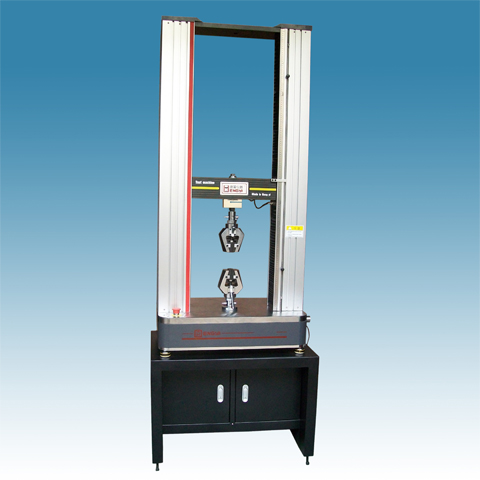1. This test method specifies a T-peel test apparatus for bonding a flexible material to a flexible material, a sample preparation, a test procedure, and a treatment result.
This test method is suitable for determining the T-peeling resistance of an adhesive composed of two identical or different flexible materials under specified conditions.
2 peel test principle
The T-peel test of a flexible material for bonding a flexible material is to apply a peeling force on the unbonded end of the sample to cause the sample to peel along the glue line, and the angle between the applied force and the glue line may not be controlled.
3 peel test device
3.1 peel test device
The balance wing tester has a suitable load range, and the chuck can separate and apply a tensile force at a constant rate. The device should be equipped with a powerful measuring system and an indicator recording system. The indication error of the force is not more than 2%, and the response time of the whole device should be short enough so as not to affect the accuracy of the measurement, that is, when the glued sample is broken, the applied force can be measured. The failure load of the sample should be between 10% and 80% of the full load. 
Recommended use: The parameters of HY-0580 using Shanghai Hengyi Precision Instrument Co., Ltd. are as follows:
25.
Power supply voltage: 220V
(Simplex)
26.
Host size: 470*400*1510mm
.3.2 peel test chuck
The crimping device can be firmly clamped when the chuck is clamped. In order to obtain a uniform pressure distribution across the bonding surface, the press plates should be parallel. If this is not possible, a flexible gasket should be placed on the press plate. The gasket has a thickness of 10 mm and a hardness (Shore A) of about 45 degrees. It is recommended to apply a pressure of 0.7 MPa. Another method for preparing the sample is to glue two pieces of suitable size into an enlarged sample piece, and then cut the sample from the enlarged sample piece. When cutting, the cutting heat and mechanical force should be reduced as much as possible. The effect of the seam must be removed by enlarging the outermost 12 mm wide strip portion of the specimen piece parallel to the long side of the specimen. The average thickness of the sample adhesive layer was measured.
4.3 Number of peel test specimens
The number of samples per batch is not less than five.
5 state adjustment and test environment
The sample shall be conditionally adjusted and tested in the standard environment specified in GB 2918. The time for the sample to be adjusted should not be less than 2 hours.
6 peel test test procedure
The unbonded end of the flexible test piece is symmetrically sandwiched in the upper and lower holders. The clamping portion cannot be slipped to ensure that the applied tensile force is evenly distributed over the width of the sample. The test machine was turned on to separate the upper and lower grippers at a rate of 100 ± 10 mm/min. The stripping length of the specimen shall be at least 125 mm, and the recording device shall simultaneously draw a peeling load curve. Also pay attention to the form of damage, that is, adhesion failure, cohesive failure or damage by adherends.
7 peel test test results processing
For each sample, the average peel force was measured from the relationship between the peel force and the peel length in units of N. The peel length for calculating the peel force is at least 100 mm. But not including the original 25 mm, you can use an estimated contour line, or use the area method to get the average peel force.
Gel Battery,Gel Cell Battery,Gel Battery For Car,Gel Type Battery
Power X (Qingdao) Energy Technology Co., Ltd. , https://www.solarpowerxx.com
